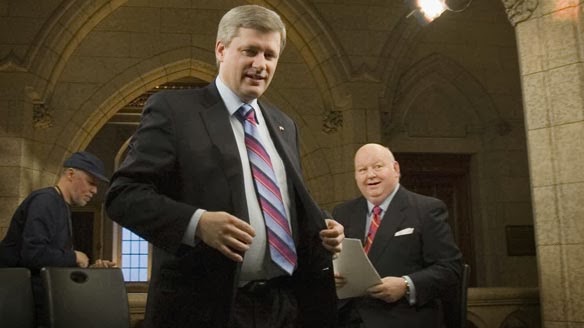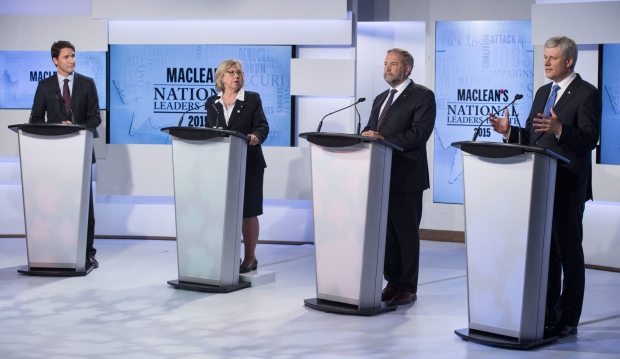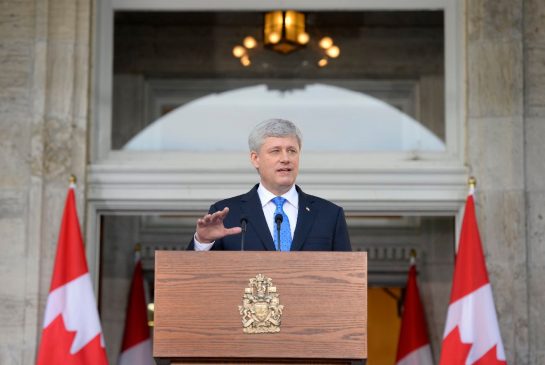
The Future of Medicare in Canada

If you want to know where the NDP stand, you can just look at their cheque book and the trees in their backyard that apparently grow the money of the world. Yes, they would throw money at the problem – but if the system is inefficient and broken, wouldn’t throwing more money at it waste more money in a system and get little to no results? As for the Liberals, I guess they’ll figure that out in January – I’d be surprised if they sided with the NDP and I would be surprised if they advocated private healthcare. It is safe to say that the Liberals will likely take the middle ground on this front and say that we should find efficiency and that we should be inspiring innovations in the system – which would be a smart move on their part. But now and days, the Liberal positions on things are vague and until January, I personally doubt that they will have a viable direction that can be pitched to Canadians and that can be implemented.
Canada’s healthcare system is facing a real dilemma. Doctors are going south of the border because the pay is better. Existing doctors are already too few for the demand. With the next wave of retirement, the system will be come costly and overburdened.
Many questions surface with very few answers. Where will we find the needed doctors? How are we going to fund Medicare? What strategies will we take to try to fight off its recent problems? What strategies are we going to take to fight off its future problems – which could very well put it in its grave.
The Conservatives have indicated that they will continue the 6% more per year expenditures but have indicated that in 5 years, they want to go in a direction of cuts. Note that if they cut out the right parts, they will get a smaller equivalent of what we currently have – which somewhat solves the question of costing. However, it depends what they intend to cut and how they intend to cut it.
If they trim bureaucracy and administrative fat in hospitals, that could be a very wise move, but if they start cutting services and mechanisms that were put in place to aid the poor, then you result in an expensive, public, version of the American system which has failed the poor and has crippled families who can’t afford health insurance. While one can argue that people don’t generally often need to see the doctor, but the day they do – say for an accident, if their insurance fails, or if they simply cannot afford it, then the healthcare system alone is a cause for poverty and great loss.
There is another route that Canada can take, but it means that every Canadian would have to open their wallets. In Nova Scotia, there was a call for a tax increase to fund an expansion to healthcare. Maude Barlow of the Council of Canadians says that health care coverage should be broadened to include pharmacare, continuing care and dental care. Barlow also called the Canada Health Act to be enforced on private healthcare firms. The Council of Canadians wasn’t alone, the Canadian Health Professionals Coalition said that the state of our healthcare is due to reduced government revenue and not inflating cost in healthcare.
Another group is looking at prevention. For example, some diabetes patients who lose limbs due to poor circulation and gangrene can avoid the treatment of ulcers ($30,000 to $60,000 per patient), and amputation below the knee (Under $50,000 per patient) with simple tests that prevent these patients from going through the expensive diagnosis for nothing.
If we continue on the current track, healthcare will consume 80% of provincial budgets by 2030 and risks causing implosion on the system – in other words: it is getting to big to sustain – and the repercussions could be painful to both patients and tax payers.
Now, there is a lot of debate and there are a lot of ideas floating around, but I want to point your attention to something pin particular: If the federal government can fund jet planes, jails, a G8 summit, hospitality, free plane rides, photo-ops, new senators, new MPs, increased bureaucracy, and a list that would take multiple articles to write, then why can’t they afford healthcare? It is a matter of misguided priorities and waste of tax payer’s money. The economy and healthcare are trending on top of Canadians’ minds but none of what I listed helps either.
So the question now becomes: Why can’t the government trim that fat and transfer resources to the ailing healthcare system? Of course, putting the money into the system could only be done after the system itself is reformed and re-inspired to ensure that it offers unmatchable, quality service at the lowest possible cost to the public purse.
Ottawa currently spends $27 billion on healthcare and transfers $58 billion to provinces which account to 19% of provincial revenues and is only a fraction of its cost. If Healthcare were made more efficient and if it were engineered to be user-oriented and user-friendly, perhaps it would not only cost less, but it would be designed to take on the pressures of the upcoming demographic crisis.
If government cut the other waste, it could be split into tax cuts for the lower and middle class and future infrastructure projects that are strategically envisioned to improve society and reduce the cost of future maintenance and running costs. If government realized a list of priorities that met Canadians’ needs and spent no more than necessary, we could have better and more fine-tuned services. We could also consider online services and management tools that are available to all Canadian citizens which could reduce wait times, and cut expenses in the long run by being able to do more in less time and being able to foresee everything clearly and commit less waste.
Side Note: In London, Ontario, there was hospital that spent millions out of the public purse to create a new wing. This would normally mean more doctors and more beds and more equipment. Instead, the wing was dedicated to new administrative offices.
So now I leave the question to you: What is the best approach to healthcare reform in Canada? Do you agree with any of the debated approaches? Where do you stand? This is your country. You can comment below or join The Canadian Political Scene on Facebook and post your opinion to the wall. (Note that profanity won’t be tolerated)




